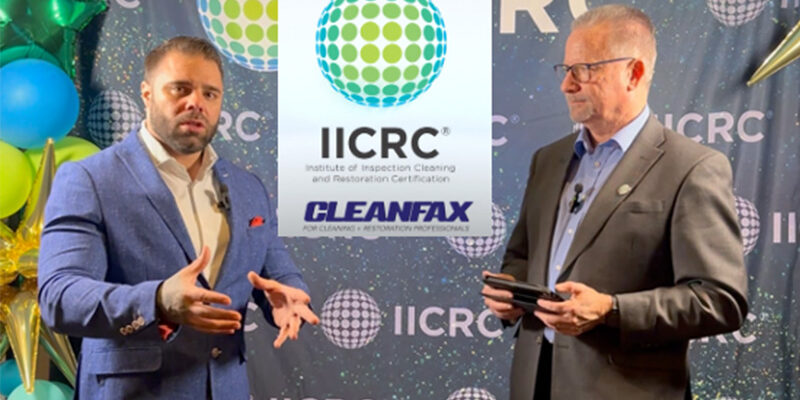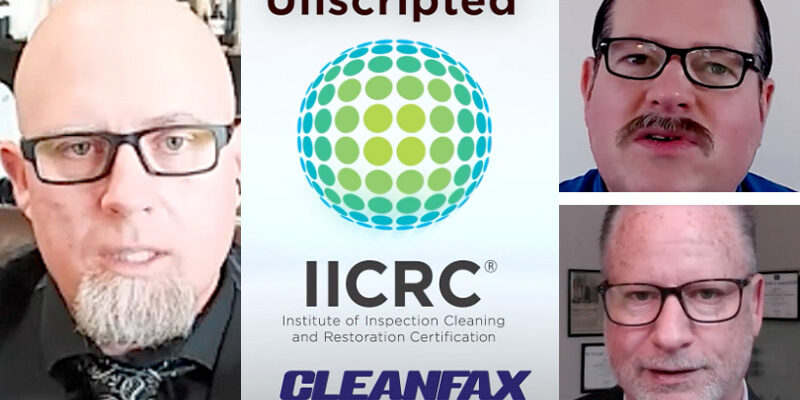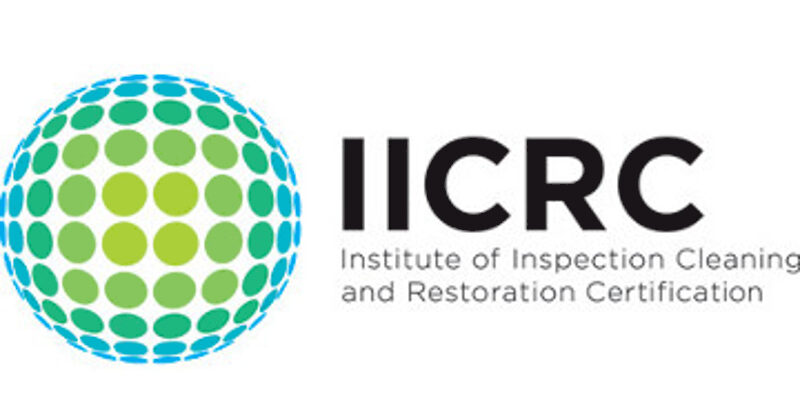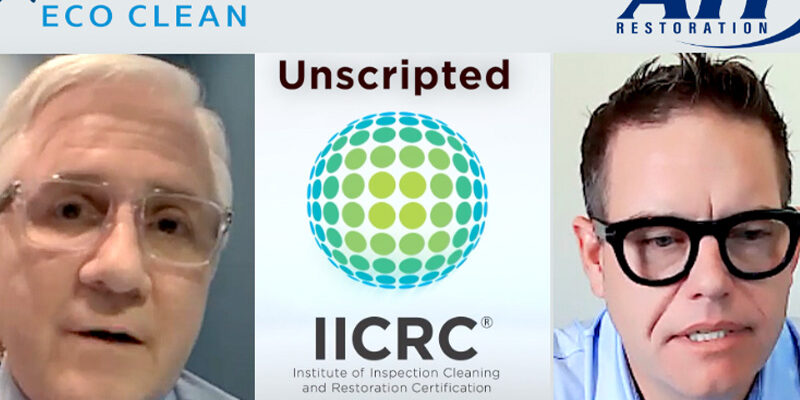The Chilling Reality of Mold

Mold is everywhere, and how it affects people’s health varies from one person to another. Some individuals aren’t affected at all, while others can become seriously ill when exposed to mold spores.
Mold is more than just an unsightly issue in homes; it’s also a hidden danger that can significantly affect the health and well-being of anyone exposed to it.
In a recent episode of Unscripted, an IICRC video program, Jeff Cross, ISSA Media Director, investigated the critical topic of mold contamination in homes. The episode highlights a harrowing experience faced by a Florida family (see sidebar) and provides expert advice from industry professionals on detecting, preventing, and addressing mold in homes.
Understanding the health risks of mold
Mold is common in many homes, particularly in areas with high humidity, like Florida. However, not all molds are equal. While some molds can be relatively harmless, others, like Aspergillus, can pose severe health risks, especially to individuals with compromised immune systems.
Mold exposure can lead to various health problems, including respiratory issues, allergic reactions, and more severe conditions, such as infections that can spread throughout the body. As mentioned in the sidebar article, Nicholas Morse’s immune deficiency made him particularly vulnerable to the dangers of mold, leading to a devastating outcome.
Mold detection and prevention
Cleanfax invited comments from mold remediation specialists Mark Cornelius and Holly Burns, both IICRC-approved instructors. They provided information about where mold is commonly found in homes and how to address it effectively.
Cornelius said mold is a symptom, while moisture is the root cause. To effectively address a mold problem, finding and eliminating the moisture source is essential. Whether it’s a leaky pipe, poor ventilation, or condensation, stopping water intrusion is crucial in preventing mold from returning.
Mold can be found in various areas of a home, particularly in places with high moisture levels, such as bathrooms, basements, and around windows. While mold in a shower or a basement corner may seem minor, it’s essential to address it promptly to prevent it from spreading.
One key indicator of mold presence is a musty odor. “If you can smell mold, it’s likely that there’s more of it hidden within your home, even if it’s not immediately visible,” Cornelius explained. In such cases, it’s crucial to investigate further and take appropriate action.
Proper ventilation is critical in preventing mold growth. Burns emphasized the importance of running exhaust fans during and after showers to remove excess moisture from bathrooms. For homes without vent fans, she suggests using oscillating fans or opening windows, when possible, to reduce humidity levels.
When to call a professional
While minor mold issues can sometimes be managed with regular cleaning, professionals should handle more extensive contaminations of mold that cause health problems. According to Burns, professional testing, including air sampling and surface swabbing, is crucial in determining the severity of a mold problem. This testing helps identify the type of mold present and the necessary steps for remediation.
The cost of mold remediation
One of the most significant concerns for homeowners facing mold contamination is the remediation cost. Unfortunately, as Cornelius explained, many mold issues result from neglect, which is not typically covered by insurance policies. This often leaves homeowners responsible for paying for remediation out of pocket, which can range from a few hundred to several thousand dollars, depending on the severity of the problem.
Burns added that while cost is a consideration, the health and safety of the family should be the top priority. If mold is causing health issues, it’s critical to address it promptly, regardless of the cost.
Government regulations and industry standards
The discussion also touched on the role of government regulations in mold remediation. While some states require mold assessors and remediators to be licensed, the industry remains relatively unregulated in many areas. Both Cornelius and Burns agree that more regulations could help protect consumers by ensuring that only qualified professionals handle mold remediation.
Some states are adopting IICRC standards as the basis for mold remediation regulations. As more states recognize the importance of protecting public health through proper mold remediation practices, this trend is expected to continue and grow.
Protecting homes from mold
Mold contamination is a grave issue that can devastate the health of your clients. The cleaning and restoration industry can prevent this from happening with the help of the IICRC.
The IICRC provides valuable resources. Visit www.iicrc.org for more information.
 One Florida Family’s Nightmare
One Florida Family’s Nightmare
Nicholas Morse is a young man who now suffers from severe health consequences due to mold contamination in his family home. His mother, Janel Rogers, and sister, Mikayla Morse, explained that Nicholas has an immune deficiency affecting his ability to fight infections.
Earlier this year, he began to experience a series of alarming health issues that ultimately led to the loss of his vision in one eye. What started as a high fever quickly escalated into a life-threatening situation.
Despite multiple hospital visits and treatments with intravenous antibiotics, his condition worsened. He developed vision problems, and his doctors initially suspected various causes, from cytomegalovirus (CMV) to varicella. However, after weeks of ineffective treatment, he was referred to a specialist in Miami. By then, Nicholas had lost his vision in one eye entirely.
It wasn’t until a biopsy was conducted at the Mayo Clinic that the true culprit was identified: Aspergillus, a mold that had grown in his eye and spread throughout his body. This mold was later traced back to their home, where it was found in various locations, including Nicholas’s desk and Janel’s bedroom. The discovery came too late to save his eye, and he now faces a future of uncertainty, with ongoing health issues caused by the mold.
The story of Nicholas and his family serves as a stark reminder of the hidden dangers that mold can pose, particularly for those with compromised immune systems.
Watch the entire episode of IICRC Unscripted below.
Editor’s Note: Cleanfax produces this media program in partnership with the Institute of Inspection, Cleaning, and Restoration Certification (IICRC). The program, Unscripted, features what the IICRC is doing, what the industry needs to know about IICRC Standards, certifications, events, technical tips, management and marketing strategies, and more. If you have a topic you would like to see featured in a future edition of Unscripted, email Jeff Cross, ISSA media director, at jeffcross@issa.com.
Industry professionals can use this information to help describe the issues to their clients and help them navigate mold contamination concerns.

 One Florida Family’s Nightmare
One Florida Family’s Nightmare










